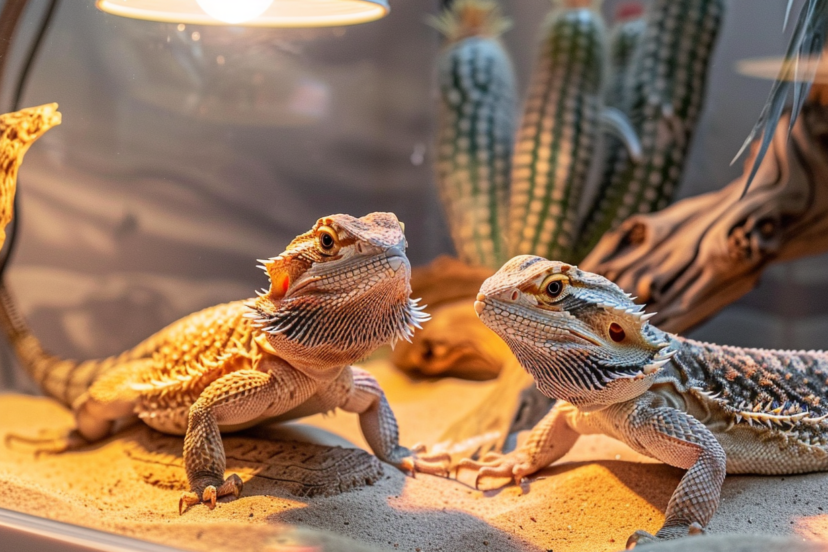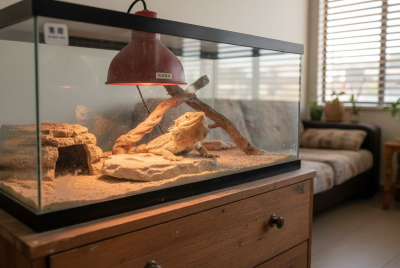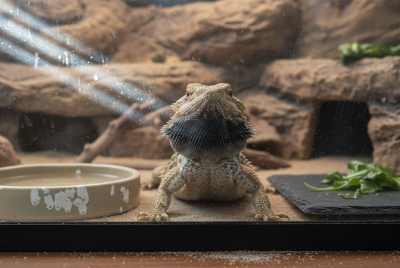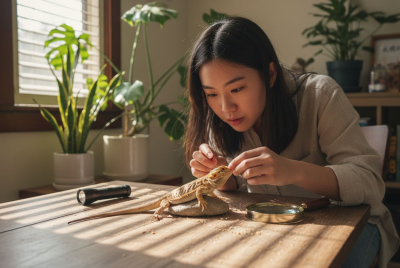Bearded Dragon Breeding, Incubators, and All You Need to Be Aware Of
Breeding bearded dragons can be a rewarding experience, but it requires careful planning and preparation. In this guide, I’ll walk you through the essentials of breeding, from choosing healthy breeding pairs to the best incubators on the market to ensure your eggs have the highest chance of hatching successfully.
Breeding Basics
Knowing When Your Bearded Dragon is Ready
One of the first steps is understanding if your dragons are old enough and healthy enough to breed. Typically, bearded dragons are ready to breed around 18 months to 2 years of age, though it can vary. Males often mature faster, while females need a little more time.
Preparing the Ideal Breeding Conditions
To make breeding successful, it’s important to have the right conditions in their enclosure. Temperature and lighting are key factors, so ensure your setup is complete with an ideal basking spot of around 100°F and a UVB lamp that’s on a 12-hour cycle.
Setting Up a Breeding Environment
Tank and Temperature Requirements
A larger tank, ideally at least 40 gallons, will give both dragons enough space. You’ll want to keep the enclosure at a comfortable temperature, between 80°F and 85°F, with a designated basking area.
Humidity and UVB Lighting Needs
Humidity should be kept low to avoid respiratory issues. A high-quality UVB light is essential, as it supports both dragons’ health and readiness to breed.
Selecting Breeding Pairs
Key Traits to Look For
Healthy, vibrant colors and an active temperament are signs of a good breeding dragon. Look for dragons of similar size and age to avoid health risks.
Health Considerations in Breeding Pairs
Ensure both dragons are free from parasites or illnesses. Having them checked by a vet before the breeding season is a good idea to confirm they’re in top health.
Mating Process
Signs of Successful Mating
You might notice head bobbing or arm waving, which are signs of interest. Male dragons will usually pursue the female, and if she’s receptive, she’ll show it by laying flat on the ground.
Post-Mating Care
After successful mating, separate the pair to give the female time to rest and begin the egg development process. Providing extra calcium in her diet will support egg formation.
Egg Laying & Nesting
Creating a Comfortable Laying Site
Providing a laying box filled with moist sand or soil can help your female feel comfortable. She’ll dig in this space when she’s ready to lay her eggs.
Common Egg-Laying Behaviors
Your female may become restless or start digging frantically when she’s close to laying eggs. Make sure she has a quiet, warm area to lay her eggs undisturbed.
Understanding Incubation Requirements
What Makes a Good Incubator
A quality incubator should maintain a steady temperature around 84°F and have adjustable humidity controls. Most dragons’ eggs take 60-80 days to hatch under these conditions.
Managing Incubation Temperature and Humidity
The right balance of temperature and humidity is essential. Too much humidity can lead to mold, while too little can cause the eggs to dry out.
Choosing the Right Incubator
Comparing Top Incubators on Amazon
Here are a few high-rated incubators that have features ideal for bearded dragon eggs:
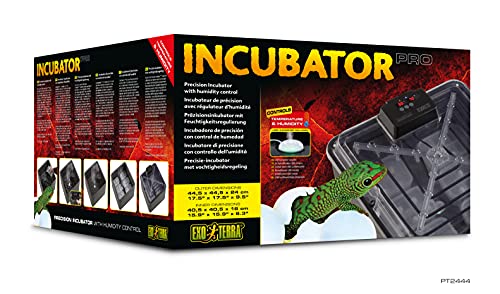 Exo Terra Precision Incubator Pro for Reptile Terrariums
Exo Terra Precision Incubator Pro for Reptile Terrariums
 Mini Digital Incubator ReptiPro 6000 Portable Reptile Incubator
Mini Digital Incubator ReptiPro 6000 Portable Reptile Incubator
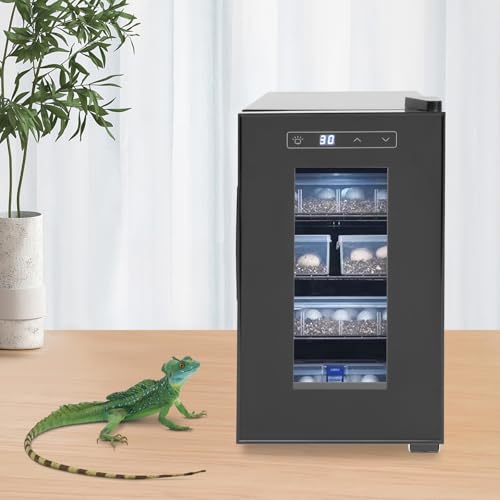 Temperature Control, Science Lab Incubator for Reptiles or Amphibians
Temperature Control, Science Lab Incubator for Reptiles or Amphibians
Maintaining Egg Health During Incubation
Handling and Inspecting Eggs
Eggs should be handled gently and checked regularly for signs of mold. If you spot any signs of trouble, consider using a damp cloth to remove fungus or discoloration.
Tips to Prevent Fungus Growth
Keep the incubator clean, and avoid overcrowding. Sometimes placing a bit of sphagnum moss around eggs can help maintain humidity without over-saturating them.
Hatching Process
Timeline for Egg Hatching
Once incubated, you can expect the eggs to hatch within 60-80 days. Keeping the environment stable during this period is crucial.
Recognizing Hatching Signs
As hatching approaches, you’ll see the eggs swelling, and eventually, small cracks may appear.
Setting Up Hatchling Tanks
Size and Safety Requirements for Hatchlings
Set up a separate 10-gallon tank for each hatchling with a gentle heat source. Avoid decorations that could trap small dragons.
Feeding and Care Needs
Hatchlings eat small crickets and finely chopped greens. Make sure to introduce calcium supplements early to support their growth.
Raising Young Bearded Dragons
Growth and Feeding Milestones
Young dragons grow quickly and need frequent feeding, around 2-3 times a day, with plenty of water.
Socialization with Other Dragons
Avoid housing young dragons together to reduce stress and aggression. They can become territorial even at a young age.
Potential Challenges in Breeding
Health Issues and Deficiencies
Some dragons may face calcium deficiencies or dehydration. It’s important to monitor their diet closely.
Addressing Behavioral Problems
Breeding can lead to occasional behavioral changes, such as aggression or stress. Giving each dragon adequate space helps minimize these issues.
Common Questions and Tips for Beginners
- How can I tell if my female dragon is ready to breed? Look for signs like increased activity and alertness.
- Can bearded dragons lay eggs without mating? Yes, females can lay infertile eggs, which require similar nesting care.
- What should I do if an egg turns moldy? Carefully clean the egg or separate it to avoid affecting others.
- Is breeding bearded dragons expensive? While rewarding, it does require some investment, especially for quality equipment.
- Do bearded dragons bond with their young? No, dragons are not typically parental, so hatchlings are best kept separate.
Conclusion
Breeding bearded dragons is an exciting and involved process. By setting up a quality breeding environment, selecting healthy dragons, and choosing a reliable incubator, you can experience the joys of welcoming new hatchlings.

